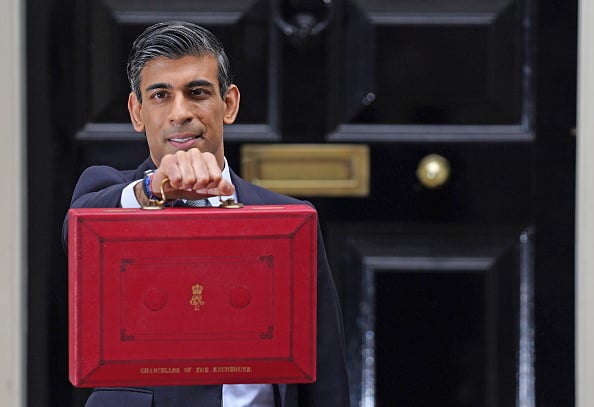Politics
The U.K.’s Latest Budget Gives Arts Organizations an Impressive-Sounding $1.2 Billion—But It’s Actually Less Than Last Year
Museum leaders are most excited about an extension of tax relief for arts organizations through 2024.

Museum leaders are most excited about an extension of tax relief for arts organizations through 2024.

Amah-Rose Abrams

British chancellor Rishi Sunak announced £850 million ($1.17 billion) worth of public investment over the next three years to protect museums, galleries, libraries and local culture, as he revealed the latest budget during a speech in parliament yesterday, October 27. He also confirmed extended tax relief for some arts organizations and institutions in a budget that is being welcomed by some but criticized by others for failing to protect people from rising living costs.
Secretary of state for digital, culture, media and sport (DCMS), Nadine Dorries, took to Twitter to celebrate the announcement of a £2 million ($2.7 million) Beatles “attraction” on the Liverpool waterfront after the area was stripped of its UNESCO World Heritage Site status earlier this year. “That’s something to Twist and Shout about,” she wrote.
Oh! Darling. The government has Come Together to invest £2 million into a major new Beatles attraction. With a Little Help from My Friends at @hmtreasury and taxpayers support, we're getting the waterfront development in Liverpool going. That's something to Twist and Shout about. pic.twitter.com/kizHhhO6wp
— Nadine Dorries (@NadineDorries) October 27, 2021
“Today’s budget and spending review are welcome news for artists, arts organizations, libraries and museums,” Arts Council England’s chair Nicholas Serota said in a statement. “We’re grateful to see the chancellor backing investment in creativity and culture for everyone and looking forward to working with DCMS to ensure this investment will bring benefit to communities across England.” The V&A, Tate Liverpool and others will share £300 million ($412 million) for maintenance which will be paid out over the next three years and £125 million ($171 million) will go to help the Natural History Museum set up a research center in Oxfordshire.
The funding for museums works out at £283.3 million ($391 million) per year, which is less than the £320 million ($441 million) that was exceptionally allocated to museums and public galleries last year. What has garnered the most positive response from the sector is that the tax relief for the arts granted in 2020 will be doubled, and, additionally, extended until April 2024.
“It’s great to hear the government showing such strong support for the arts,” Maria Balshaw, director of Tate, said in a statement. “I’m particularly grateful to see the extension of tax relief that has already made a huge difference for the sector and much-needed investment in the public museum buildings which make up such a vital part of our cultural infrastructure.”
There will also be funds totaling £75 million ($103 million) for 110 local museums to improve their buildings and digital systems. Local institutions suffered greatly through the pandemic due to uncertainty regarding government relief while they were shuttered for long periods during lockdowns. This money is also for libraries, many of which have closed due to austerity policies that predate the pandemic.
“As we emerge from the pandemic, national museums like Tate and our powerful regional museums can and will play a transformative role in cities and towns throughout the country,” Balshaw’s statement continued. “The U.K.-wide ecology of museums and galleries will be essential for rebuilding social wellbeing and inspiring new generations of visitors.”
In the Conservative government’s post-Covid “Levelling Up Fund” prospectus published yesterday, it was detailed that money from this fund would be used across the United Kingdom to help with infrastructural support for cultural institutions. The document states that there will be: “cultural investment in maintaining, regenerating, or creatively repurposing museums, galleries, visitor attractions (and associated green spaces) and heritage assets as well as creating new community-owned spaces to support the arts and serve as cultural spaces.”
The chancellor also stated in his speech that government would “review our museum freedoms” but did not expand on what that might mean.